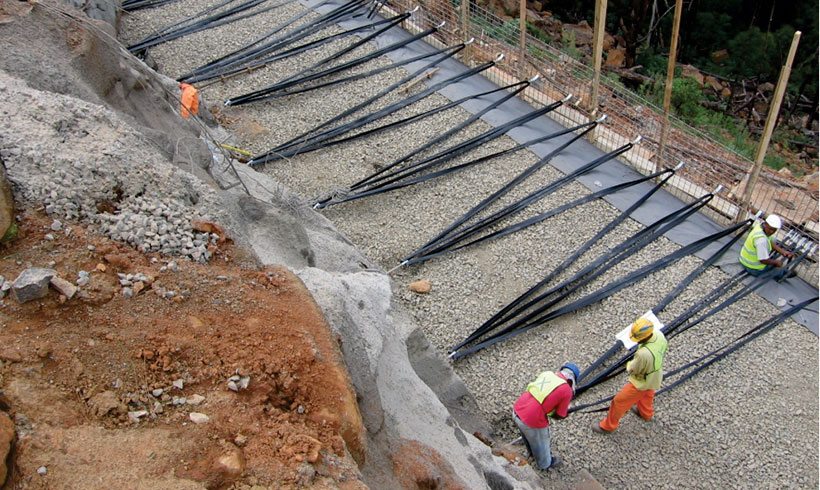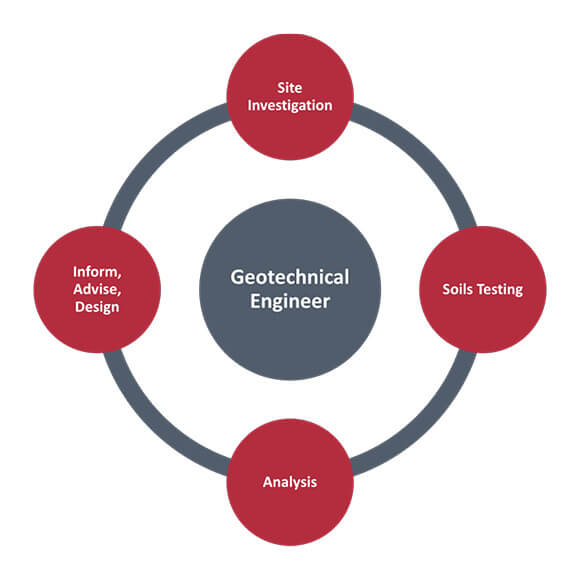Excitement About Geotechnical Engineering For Construction Projects
The Ultimate Guide To Geotechnical Engineering For Construction Projects
Table of ContentsGeotechnical Engineering For Construction Projects Can Be Fun For AnyoneGeotechnical Engineering For Construction Projects Can Be Fun For EveryoneFacts About Geotechnical Engineering For Construction Projects RevealedGeotechnical Engineering For Construction Projects Fundamentals ExplainedUnknown Facts About Geotechnical Engineering For Construction ProjectsThe Facts About Geotechnical Engineering For Construction Projects UncoveredSome Known Facts About Geotechnical Engineering For Construction Projects.
and Kovacs, W. (1981 ), An Introduction to Geotechnical Design, Prentice-Hall, Inc. Deep Scan Tech (2023 ): Deep Scan Technology discovers surprise structures at the website of Denmark's tallest building. "Geofrost Coring". GEOFROST. Retrieved 20 November 2020. Han, Jie (2015 ). Concepts and Method of Ground Enhancement. Wiley. ISBN 9781118421307. RAJU, V. R.Ground Renovation Technologies and Instance Histories. Singapore: Study Posting Services. p. 809. ISBN978-981-08-3124-0. Ground Enhancement Principles And Applications In Asia. Pariseau, William G. (2011 ). Style evaluation in rock auto mechanics. CRC Press. Hegde, A.M. and Palsule P (Geotechnical Engineering for Construction Projects).S. (2020 ), Efficiency of Geosynthetics Reinforced Subgrade Subjected to Repetitive Lorry Plenties: Experimental and Mathematical Studies.
Cengage Learning, Stamford, 666 p. Atkinson, J., 2007. The technicians of dirts and structures. The Observational Technique in ground engineering principles and applications.
Some Known Facts About Geotechnical Engineering For Construction Projects.
Laboratory and area testing plays a crucial duty in this procedure. By drawing out samples from the earth's subsurface and using a collection of examinations, geotechnical engineers can predict the behaviour of dirt layers and assess their suitability for various construction efforts. The significance of geotechnical engineering in civil design can not be overemphasized, attributable to a number of variables: The preliminary action in any kind of geotechnical research study involves establishing the soil kind at the construction website.
The structure acts as the bedrock of any type of building and construction project. Selecting the appropriate foundation type is a choice that pivots on the extensive analysis supplied by geotechnical engineering.

Geotechnical website investigation is an important action in the preparation and implementation of any type of construction job. It involves the collection and analysis of data associated to the physical homes of soil and rock underneath a suggested building website. This information is vital for the style and building of risk-free, stable, and lasting frameworks.
Geotechnical Engineering For Construction Projects for Beginners
In this blog, we will certainly look into the importance of geotechnical website examination, its numerous elements, and just how it benefits building projects. Geotechnical website investigation, also called subsurface exploration, involves a collection of tasks aimed at establishing the dirt, rock, and groundwater problems at a building and construction website. The key objectives are to recognize prospective geotechnical hazards, evaluate the engineering residential or commercial properties of subsurface products, and supply recommendations for the layout and building and construction of structures, keeping walls, and various other structures.
This might consist of geological maps, aerial photos, previous examination reports, and historical data. The desk research study assists in recognizing potential geotechnical concerns and preparing the subsequent fieldwork. Complying with the desk research study, a website reconnaissance is conducted to visually inspect the website and its surroundings. This includes observing the topography, drainage patterns, existing structures, greenery, and any type of indicators of instability or erosion.
More About Geotechnical Engineering For Construction Projects
Superficial test pits are excavated to directly observe and sample the soil and rock. This method works for studying the top layers of the subsurface and identifying near-surface threats. Non-invasive geophysical techniques, such as seismic refraction, ground-penetrating radar (GPR), and electrical resistivity tomography (ERT), are used to map subsurface problems and spot abnormalities.
Dirt and rock samples gathered during the area investigation are subjected to laboratory testing to determine their physical and mechanical buildings. Common lab examinations consist of grain size evaluation, Atterberg limits, compaction examinations, triaxial shear examinations, and consolidation examinations. These tests provide necessary data for geotechnical analysis and design. The information accumulated from the desk research, website reconnaissance, field examination, and research laboratory screening are evaluated and analyzed to create a comprehensive understanding of the subsurface problems.
The main benefit of geotechnical website investigation is ensuring the safety and security of frameworks. By understanding the subsurface problems, designers can make structures and various other architectural components that can withstand the tons and ecological pressures they will certainly go through. This lessens the threat of negotiation, decrease, and structural failure.
The smart Trick of Geotechnical Engineering For Construction Projects That Nobody is Discussing
This makes sure efficient and risk-free construction techniques. Geotechnical website examinations are often needed by constructing codes and regulations.
This info is very useful for job supervisors, engineers, and professionals in creating realistic routines, spending plans, and contingency strategies. Geotechnical Engineering for Construction Projects. Skyscraper in a Coastal AreaIn a seaside city, a skyscraper domestic structure was planned on a website with thought loosened sand down payments and a high water table. An in-depth geotechnical examination, consisting of borehole boring, CPT, and geophysical surveys, was carried out
Things about Geotechnical Engineering For Construction Projects
Based upon these findings, the foundation style was customized to consist of deep stack structures prolonging right into stable strata, and ground enhancement strategies, such as vibro-compaction, were carried out to alleviate liquefaction threats. This proactive approach made certain the safety and try this website security and stability of the structure while avoiding costly post-construction remediation. Framework Development on a Sloping TerrainA major facilities project, involving the building and construction of a highway and bridges, was prepared on an uneven surface with high slopes.

The Leaning Tower of Pisa (Italy), a renowned building marvel, is notorious for its unplanned tilt from significant geotechnical issues. The tower's structure was inadequately developed to deal with the soft, unsteady soil under it, resulting in irregular settlement and its unique lean. Our world is populated with remarkable facilities projectsfrom looming high-rises to sprawling bridgesall standing testimony to the development of the various construction tools and methods offered.
Geotechnical design is a specific field within civil engineering that concentrates on researching the habits of planet products. This branch dives deep right into the groundinvestigating exactly how the dirt, rock, and groundwater at a building website can influenceand be influenced bythe infrastructure that we put up on and right into them. Prior to a single block is laid or a concrete structure poured, geotechnical designers probe into the earthgathering important information regarding the website's soil structure, rock structure, and groundwater degrees.
Little Known Questions About Geotechnical Engineering For Construction Projects.

is a device made use of to examine the stability and load-bearing capability of stacks throughout installation, leveraging the principle of wave proliferation. It optimizes building efficiency by supplying real-time examinations, therefore ensuring risk-free and effective heap foundations. Among the practical applications of geotechnical engineering involves deciding and implementing the ideal techniques for foundation construction.
Pile driving stands for even more than the simple act of placing architectural aspects into the ground. As a matter of fact, it is a thoroughly coordinated process of moving a framework's lots past the less stable dirt layers more detailed to the surfacedown to the a lot more substantial strata that lie below. When it click reference comes to heap driving, take into consideration just how geotechnical engineers expertly use this technique to reference uniformly disperse the structure's weight.